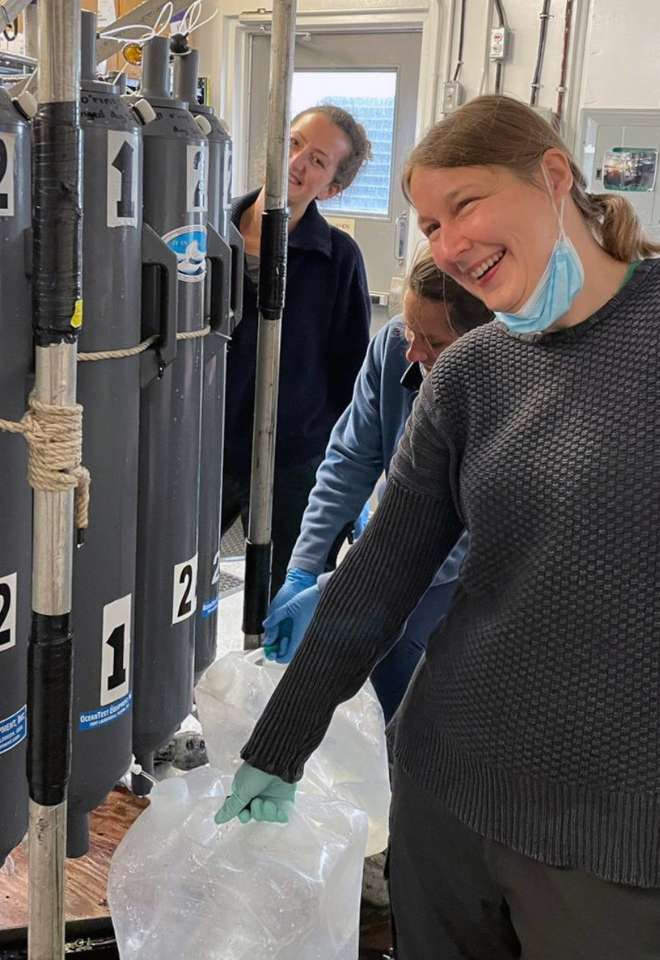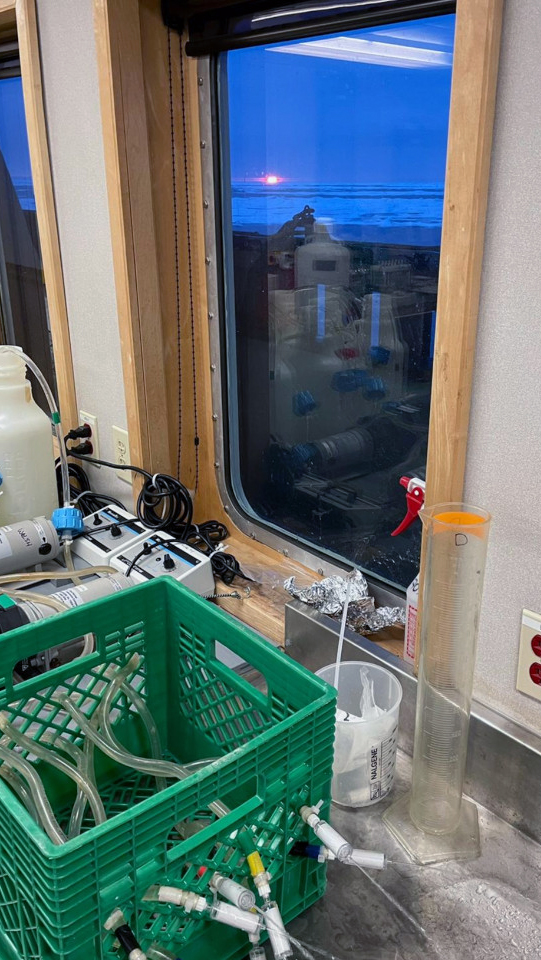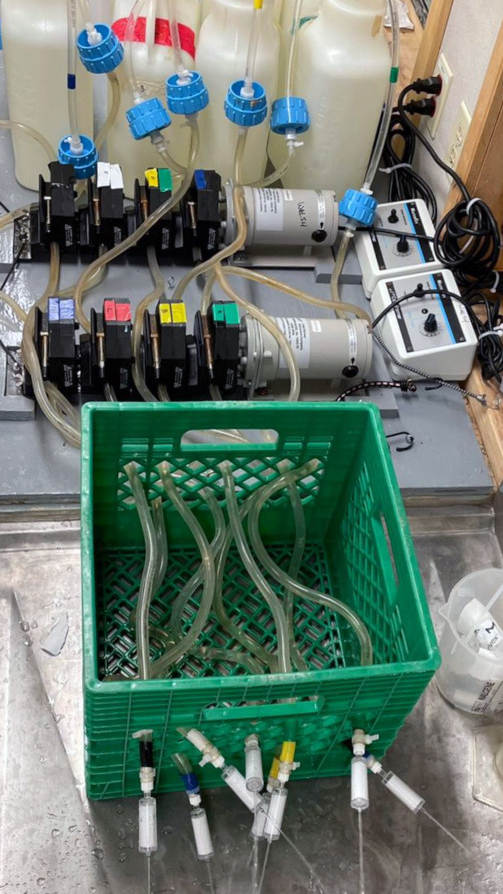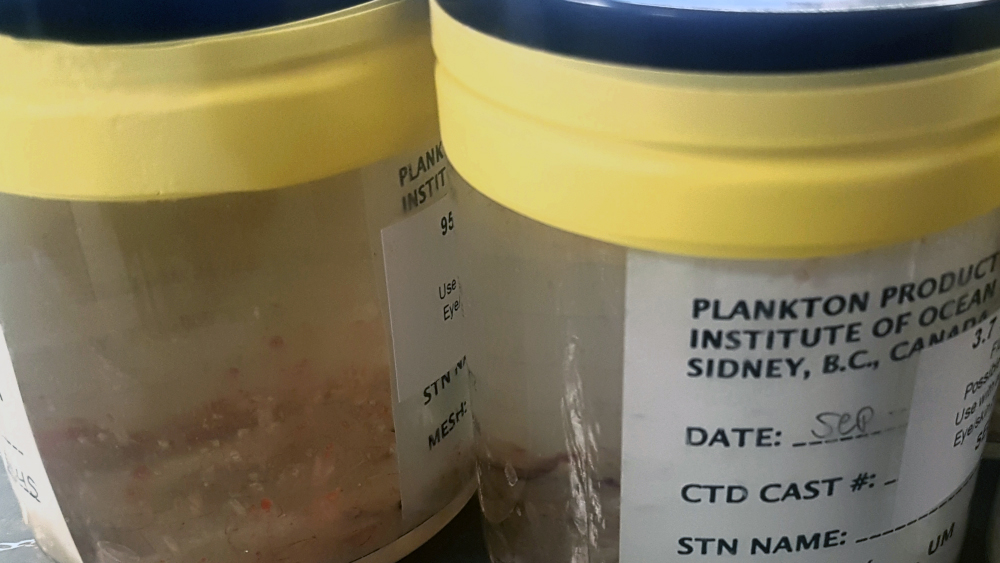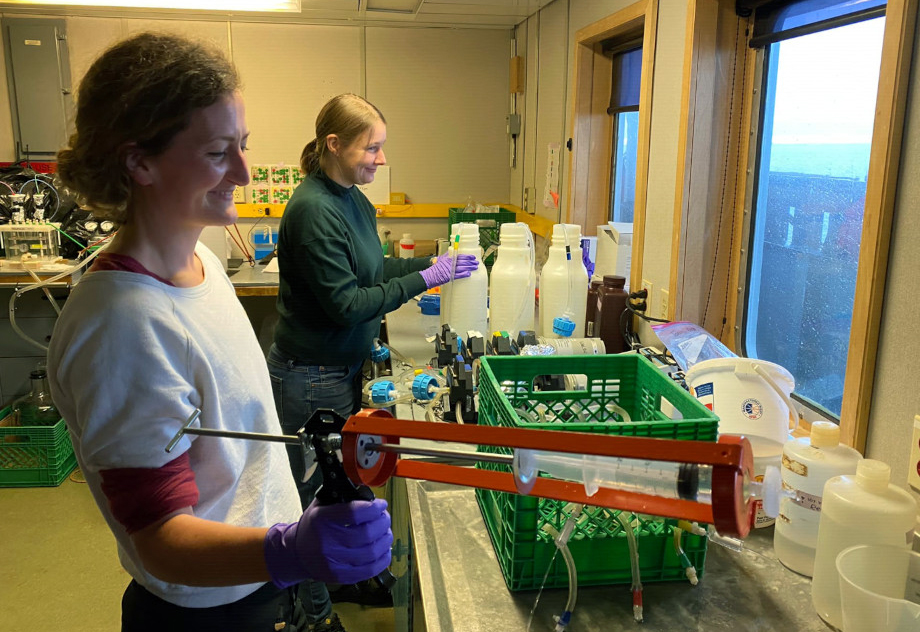Dispatch 11: Sampling at Sea – Microbial Life
Susanne Kraemer
September 1, 2021
In addition to the physical parameters of the Beaufort Sea, we are also interested in its biological communities. The most visible way JOIS studies life within the Beaufort Sea is without a doubt the “bongo” net casts for zooplankton (the nets look like large bongo drums when hung over the ship’s side), resulting in bizarre-looking crustacean communities gently floating in fixative in the main lab. Less easily observed – but essential for the functioning of the ecosystem – are microbial communities, composed of single-celled plants, bacteria and their viruses.
The Louis’ “DNA team” sets out to preserve and study these invisible communities. In a collaboration between researchers from Université Laval and Concordia University, we sampled Beaufort Sea microbial communities on the JOIS cruise for several years, hoping to understand how they respond to a changing Arctic Ocean and predict the effects of future Arctic warming and freshening.
We mostly do this at sea, filtering liters upon liters of seawater through increasingly fine filter sets ranging from three to 0.2 to 0.02 micrometers in size. These sequential filtrations allow us to differentiate the larger algae cells from bacteria and even tiny viruses, essentially separating the three invisible communities to allow us to study them independently. Once the target cells are trapped on a filter, we preserve it at -80 C. Back in our home labs, we break the cells apart with chemicals to extract their DNA, and sequence and reconstruct the genomes to deduce which organisms were there and what their function is (“What do they eat? How do they communicate?”). Studying microbial communities through their DNA is a game of delayed gratification, as we need to budget months (if not years) until we know what kind of community we captured. On the upside, each sample has the potential to yield gigabytes of genetic information.
At dedicated DNA sampling stations throughout the Beaufort Sea, we sample eight different depths ranging from the surface to the bottom of the water column near 4000 meters. These depths represent distinct water masses, with different origins (Pacific or Atlantic water), nutrient availabilities and salinities – essentially a layer cake of completely different ecosystems.
So far, data obtained through the JOIS cruises have helped assess changes in microbial communities in relation to low sea ice levels, shown shifts in the metabolic capabilities of marine bacteria as they encounter more terrestrial-derived food in their ecosystems, and demonstrated that certain bacteria are adapted to Arctic conditions.
The work of the DNA team is constantly evolving as we integrate new project ideas into the existing sampling framework. In addition to the long-running time series of the Beaufort Sea, we are also aiming to study microbial interactions in sea ice as well as obtaining samples for cultivation of difficult-to-grow Arctic-adapted bacteria in the lab.
